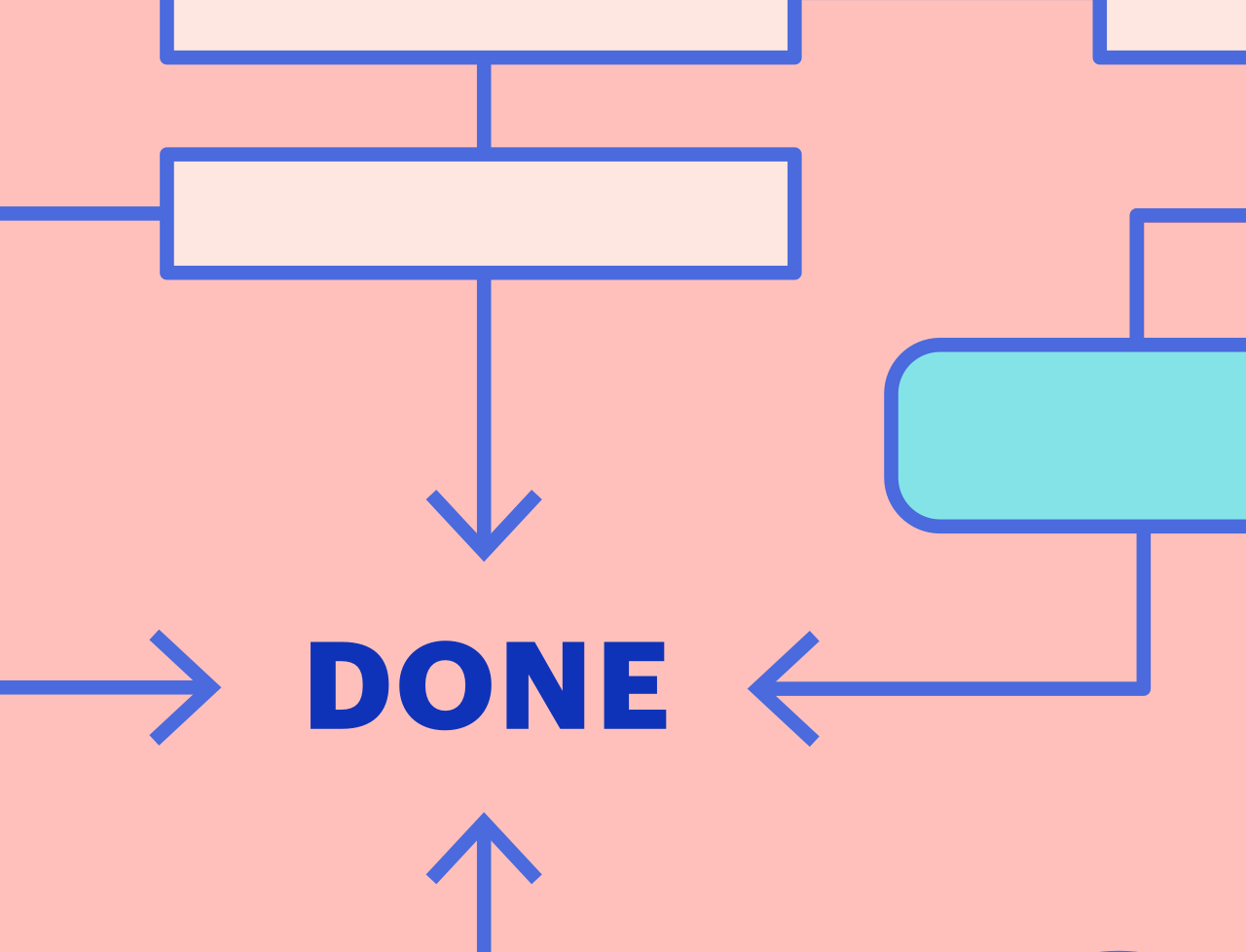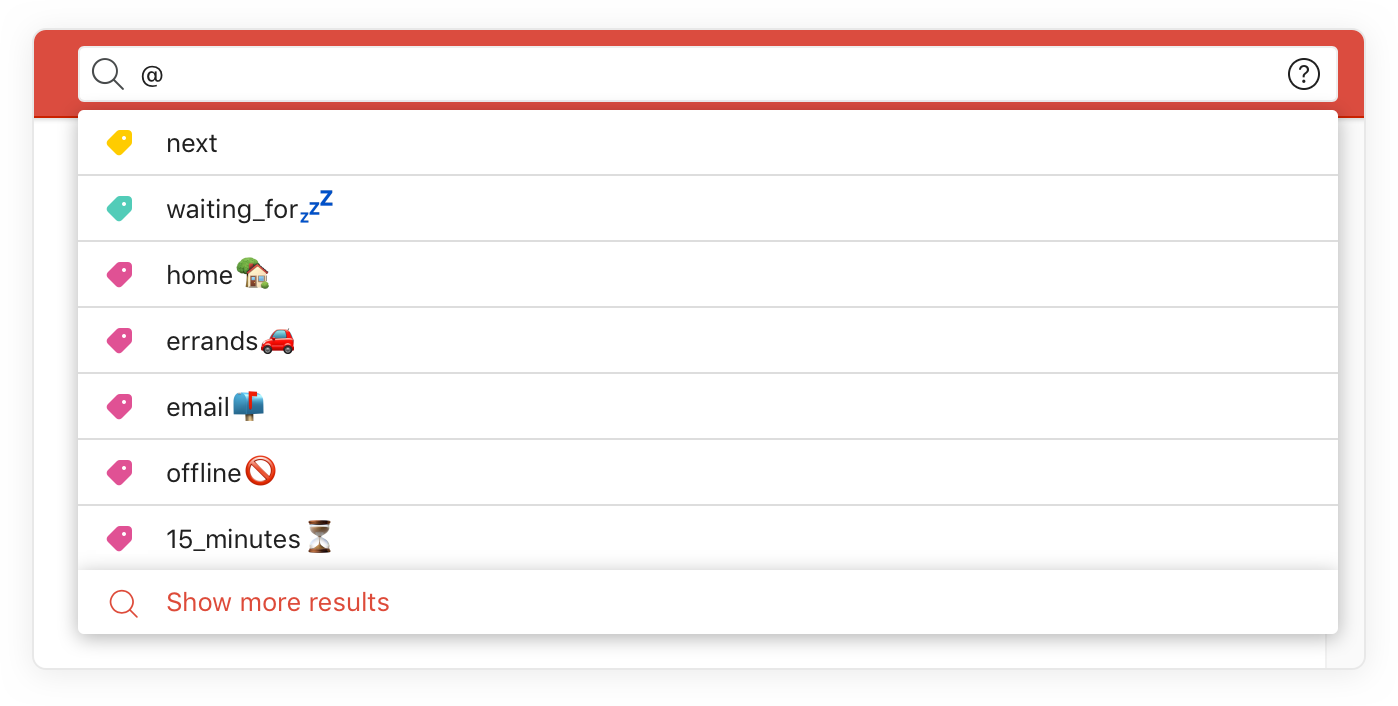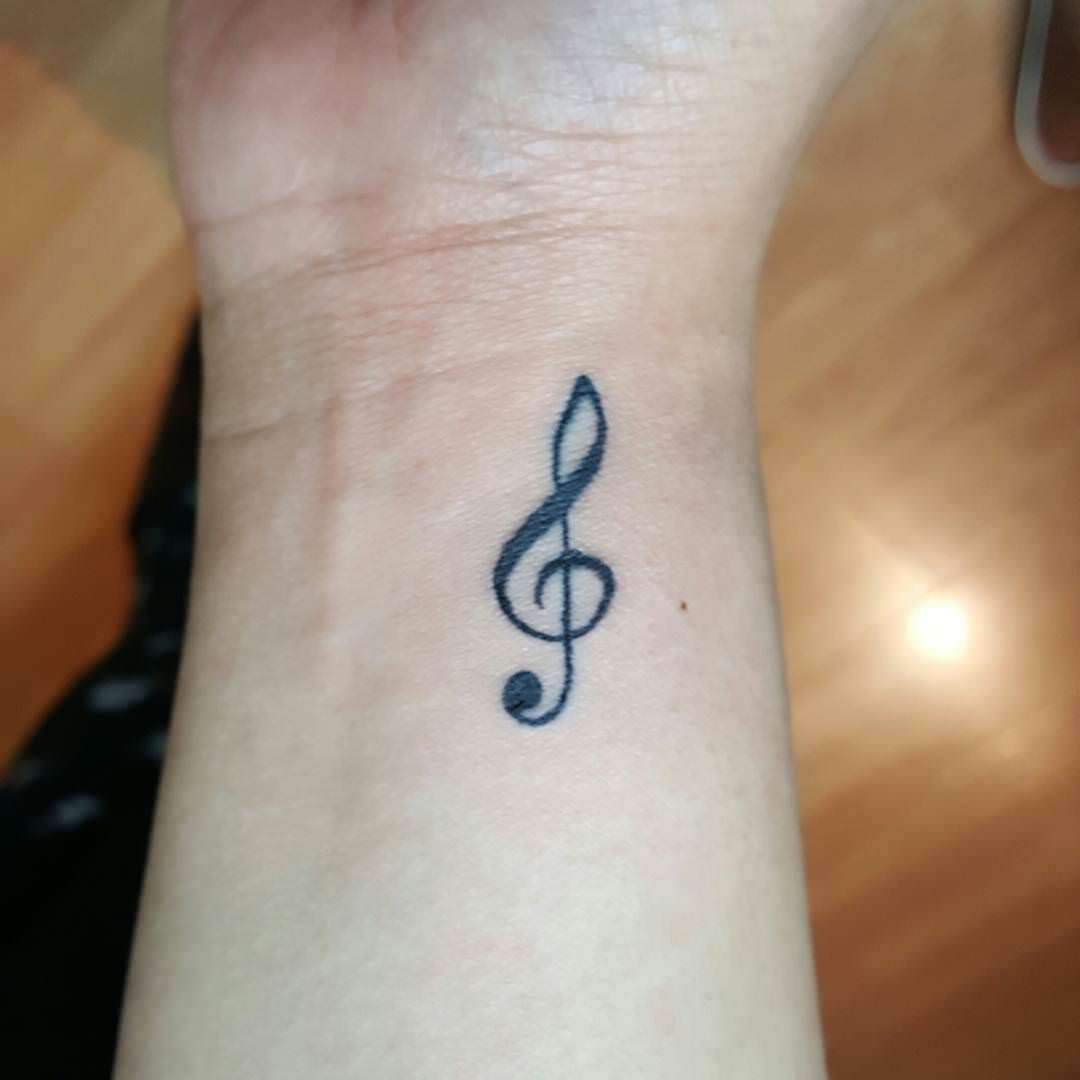Having a good digital tool to help you organize your Getting Things Done system is essential. In this post, I’m showing you my Todoist GTD setup.
- Getting Things Done Todoist Setup Guide
- Todoist Getting Things Done Online
- Getting Things Done Todoist Pdf
This short guide will show you how you can use David Allen's Getting Things Done methodology, or commonly called GTD, with Todoist.One of the keys to GTD is. USING TODOIST TO MANAGE PROJECTS AND NEXT ACTIONS LISTS Todoist is an excellent option for managing the Projects, Next Actions, and Waiting For lists in your system. We recommend you create lists in Todoist to match the common set of lists recommended in the Getting Things Done book, which we describe in more detail over the following pages.
- A Pomodoro timer is a method for driving flow - the ability to get lost in deep concentrative work where time seems to disappear, and you get tons of work done! Pomodoro is the best way I have.
- Having a good digital tool to help you organize your Getting Things Done system is essential. In this post, I’m showing you my Todoist GTD setup. This is part one of a two-part series describing my Todoist GTD setup. You may find the next part here: My Todoist GTD setup – Part 2: Weekly Review and Focus Horizons.
This is part one of a two-part series describing my Todoist GTD setup. You may find the next part here: My Todoist GTD setup – Part 2: Weekly Review and Focus Horizons.
I know that it is possible to do GTD on paper, but in my mind, having a good digital tool to help you organize your Getting Things Done system is essential. With today’s fast pacing and constantly changing priorities, I seriously do not see how people can manage this on paper. I find that 70% of my action items come from, or at least involves email. Going for a paper-based system would be a nightmare.
Getting Things Done (GTD) – What is it?
Read More
My GTD tool: Todoist
I think it is safe to say that I have tried most of the GTD tools on the market (as of summer 2016) I have ended up with Todoist Pro. This tool is not perfect, but with some tweaking, it works really well. My final reasons for choosing Todoist was the following:
- Flexibility: Todoist runs on every major platform. Windows, Windows 10 Mobile, Android, Android Wear, OS X, iOS, and web.
- Integration: Outlook Gmail, Chrome, Firefox, IFTTT, to name a few. See full list here: https://support.todoist.com/hc/en-us/articles/205143181-Integrations
- Todoist Karma. (It really works!)
- Trust: With more than 5 million users and a good customer service, I feel that this is a service I can literally build my life around.

Want to sign up for Todoist Premium?
In that case, I would appreciate if you use the below link. If you do that, I get two months Todoist Premium added to my account – with no extra cost for you. Thanks!
Sign up for Todoist Premium here
My Todoist GTD setup
Part of Todoist’s success is due to its flexibility. The downside of this flexibility is that you have to figure out how to set up Todoist as a GTD tool. I don’t think that my Todoist GTD setup is the one and only way to do this. It all boils down to how you have implemented GTD in your life. What I do know is that I’m in some way or another using most aspects of the Getting Things Done method, so I think that there will be something to learn for most GTD practitioners by reading this Todoist GTD setup guide.
[bctt tweet=”Remember this about GTD: The app comes second, the approach comes first.”]
Projects
According to Davin Allen, a project is anything that takes more than one step to complete. For all practical purposes, a project can be as defined by David Allen or used as a parking place for action items related to the same issue, project or type of work. Personally, I tend to use both types of projects.
In part two of this post, I will show how to use Todoist projects for managing Weekly Review and Focus Horizons.
Contexts (Labels)
(Please be aware that in order to use Labels, you must have a Todoist premium account.)
Contexts are maybe one of the most useful features in Getting Things Done. Used correctly they can multiply your productivity and turbocharge the way you work.
I define contexts as something both physical and mental. It can be the physical place you need to be. Some types of work can only be done at the office or at home. Some things can only be decided at the next department meeting or the next time you have sit-down time with your boss or customer. Because contexts have to be tailored to both the way you function as a person and the nature of your work, this is maybe the area where you will have to adjust your Todoist GTD setup the most.
It can also be useful to define important tools like computer or internet as a context. In periods when I travel a lot, I will have flight or offline as a context. This enables me to sort out the type of work I can do when flying with no access to WIFI.
A context can also be a mental state or role. I use a context called Work for everything work-related, independently of where I decide to work.
My contexts
Be aware that since Todoist does not have Next Action or energy levels defined as separate items in the software, you will have use Labels for this.
- Work
Anything work related that does not involve having to meet with other people. This is both a mindset context and a physical context. - Private
Anything private that can be done anywhere. - Home
Anything that I need to be physically at home to get done. - Cabin
Anything that I need to be physically at the cabin to get done. - Next Action
Just that. All of my next actions viewed in one place. - Phone
This context can be very handy in between two meetings or when driving a car. - Work.Ag.Mngr
Anything I need to discuss with my manager when we have time together. - Work.Ag.Team
Anything I need to discuss or inform about the next time we are all in the same room. - Follow-up
Any emails or delegated actions that are critical enough to warrant my time ensuring that it has been answered or done. - Low Energy
Things that I can do Friday afternoon or on a lazy Sunday morning.
Filters
This is probably the feature that I use the least.
- Next Action Work
All of my next actions for work-related projects.
This is what I choose from when I have done everything work-related on my Today list. - Work projects
All of my work-related projects in one place. - Home
The two contexts Home and Personal. - Cabin
The two contexts Cabin and Personal. - Next Actions @Home
This is what I choose from if I’m at home and have done all the private stuff on my Today list. - Next Actions @Cabin
This is what I choose from if I’m at the cabin and have done all the private stuff on my Today list. - Overdue
I better not find anything here. - Priority 1
What is most important in my life right now. - No due date and No context
I use these to do a “quality check” in my Weekly Review. - Next 30 days
What is in the way for my vacation or when doing long-term planning. - Compleated today
-No longer supported.
The ultimate guide to Todoist filters
Read More
Capturing tools
As a part of my Todoist GTD setup, I use the following tools and methods to capture information into Todoist.

Automated:
- Using IFTTT, I get action items for unanswered calls and SMS messages on my cell phone directly into my Todoist inbox.
- Using IFTTT and the local weather forecast, I get an action with priority 1 in the morning if it will rain or snow during the day.
On the move:
- Todoist shortcut on my Samsung Galaxy Note8
- Newton email integrates email with Todoist on my phone and tablet
- Braintoss captures pictures, notes and audiosnippet and sends in direcly to my Todoist inbox.
- Livescribe 3 smart-pen + App. Send notes to Todoist
- Mont Blanc ballpoint pen and a small Moleskine notebook
In the office and at home:
- Todoist Outlook add-in
- Square bank paper notes
Do not miss my next blog post: My Todoist GTD setup – Part 2: Weekly Review and Focus Horizons.
Related
Table of Contents
- In depth discussion
- Evernote
- Todoist
- NirvanaHQ [winner]
- FacileThings
If you’re unfamiliar with Getting Things Done, I strongly urge you to go read the book, it’s a life changer. I do not intend to repeat the contents here, but I will include some nice variable-length summaries I’ve found and enjoyed:
It’s not a perfect book (I gave it ★★★★☆), but the abstract concepts behind it are so powerful that in combination they feel like acquiring a superpower.
Getting Things Done is one of those very rare books that changed my life. Before reading it in 2014 I considered myself a smart and driven person, but also unreliable, irresponsible and chaotic. I would pick up and drop projects on a whim, forget tasks that I promised to do, arrive late to everything and generally I just felt unproductive and stressed. The trust between present-me and future-me was pretty low.

After several years of practicing the GTD system, I became an objectively more reliable, consistent and productive person. Present-me and future-me have become great allies and even more importantly I enjoy the process of planning and performing my tasks and work.
The book was published almost 20 years ago and today is still, in my opinion, the best and most complete personal productivity system out there. While originally it was implemented with physical files, folders and papers, it has since been transformed by many practitioners to accommodate to the digital age.
When I started practicing GTD, the best implementation I found was in Evernote. It was called “The secret weapon” and it worked well — I’ve used and refined it for years, until last year I finally decided it’s time to switch. Surely a better implementation must exist by now.
After taking a couple of months to try different software solutions, I’ve settled on using NirvanaHQ. In the next section I explain why.
For those who just want a straight answer, NirvanaHQ is my winner. After sticking with it for months, I’m still very happy. I summarize the comparison below:
Evernote: my first GTD implementation. Used it in 2014-2018 and it completely worked. Clunky to set up and clunky to use, but versatile enough to deliver a full GTD experience. In my opinion it was the best option until recent years.
Todoist: a well designed and implemented general task-management app. Requires a lot of tinkering to fit to the GTD system and then it’s a proper solution. I love how responsive and intuitive the app is and that it has many third party integrations. Currently my second choice.
NirvanaHQ [winner]: finds a great balance between true GTD implementation and a light, well designed modern service for web and mobile. It’s not perfect (I am sorely missing integrations with outside services such as calendar or IFTTT/Zapier and support for task images / attachments), but it really achieves the GTD vision simply and beautifully. My current choice.
FacileThings: the most true, hard-core implementation of GTD I’ve seen and a great tool to introduce newcomers to the system with a guided experience. The only tool that has built in consideration of your purpose, vision, goals, areas of responsibility and even formalized a weekly review process. Too bad the UX is not so well designed and requires a lot of clicks to get anything done, and perhaps a bit too restrictive in doing GTD “the right way”.
I’ve also tried other apps like AnyDo, Wunderlist and Remember The Milk but didn’t find them to fit well with GTD.
If you’re interested in setting up a GTD implementation for a non GTD-native app like Evernote or Todoist, read on…
What is required to implement GTD?
As far as I can see, to implement GTD you need two things:
- Mutually exclusive folders/labels to represent task status: [Inbox / Now / Next / Someday-Maybe / Waiting-Delegated / Complete].This is trivial: I need to be able to move a task from one status to another and have it erase the previous one automatically (otherwise, when I label something as next I’d have to also remove the label soon).
- Concurrent labels to represent context:
- What: properties of your tasks such as: priority, low/high energy, estimated time and so on. They can also be keywords such as: health, finance, family and so on.
- Where: places where you’re likely to do tasks.
- Who: separate tags for people you frequently work with or delegate tasks to.
The context labels allow me to figure out what to do next that fits my context. For example when I’m driving, need to fill 10 minutes or am in the mood to do something specific.
If you can make these two requirements work, you’ve got yourself a basic GTD system and the rest is details (which can sometimes still be very important!).
Further considerations:
- Separate work and life tasks easily.
- Have useful reminders that pop up at the right time, in the right context, in the right location.
- Integrations with other services (such as your calendar).
- Great UX and a snappy multi-platform experience.
Side note:
The minimal implementation of GTD that exists is probably todo.txt.
Evernote
My first GTD implementation. Used it in 2014-2018 and it completely worked. Clunky to set up and clunky to use, but versatile enough to deliver a full GTD experience. In my opinion it was the best option until recent years.
Implementation
The best implementation of GTD that I’ve seen for Evernote is The Secret Weapon. The only thing I strongly object to is their decision to implement task status as tags, under a .when label (see their setup page).In Evernote, I think task status must be implemented using the notebooks, since they are the only mutually exclusive kind of tag (reasoning given above).Below is a screenshot of my own setup which has worked for me for years. Note the separation of work and life into two notebook stacks. Task status switches are very easy to manage.
Pros
- Super easy to capture tasks, ideas and information. Evernote implemented a great capturing tool on android by creating a 1-click widget to capture text, photos or voice. Everything goes into the inbox to be processed later.
- Extremely flexible. Using notebooks and tags you can set up your system any way that you want. Tags have infinite hierarchy.
Cons
- Not GTD-native. By that I mean that while Evernote is versatile enough to implement GTD, it wasn’t built with GTD first in mind. The result is a somewhat clunky daily experience. For example:
- Tasks are just Evernote notes, which don’t have standard task properties like energy levels, time estimation or the ability to “tick” a box when done in a satisfying manner.
- Reminders in Evernote are weak and it is hard to define and properly follow self-imposed due dates.
- Two GTD notebook stacks are required to separate work and life tasks. Or at least that’s the best separation I could think of.
Todoist
A well designed and implemented general task-management app. Requires a lot of tinkering to fit to the GTD system and then it’s a proper solution. I love how responsive and intuitive the app is and that it has many third party integrations. In my opinion even after proper setup it’s second to NiravanaHQ, but for non-GTD-purists it might be a winner.
Implementation
The setup in one picture:
The main problem with implementing GTD on Todoist is that this software is oriented around due dates and there is no clear way to implement task status. This could be solved by either having a set of mutually exclusive labels (for task status) or simply nested labels (for projects, which would free up the Todoist projects pane for task status purposes). Unfortunately both features are missing, so I’m facing a dilemma:
If I use the projects tab for task status, then I have to implement my actual projects as labels, which sucks because Todoist labels are not nested and generally not first class citizens.
If I use labels for task status, they are not mutually exclusive which is one of the two requirements above.
How to solve this? Interestingly, I found a way around this limitation with the use of filters: give each task-status a label.
For each task-status create a filter which shows only tasks for which that status is the highest priority.Add the filters to favorites and then view the task statuses from there.
As an example, say I have the task “buy milk”. At first I add the label Soon to it. Then at some point the task becomes relevant and I add the label Next to it. The filter for Next is set up in such a way that it shows everything with label Next, so the task will be seen under it. But! The filter for Soon is set up so that tasks which belong also to Next do not appear under it, and so the task is effectively gone from this view.
To define the filter simply enter: Soon & !Next which translates to: “Show me tasks which belong to Soon and don’t belong to Next”.
Naturally I setup the other task-status the same way.
Pros
- Full of integrations with other services
- A very smooth experience both on web and mobile
- Powerful reminders and repeating tasks
Cons
- Not GTD-native and not trivial to set up proper GTD even when trying. And to be honest, even after proper set up I was still missing some critical GTD features like assigning a contact person to a task (it’s possible to implement contacts as labels, but since there are is no nesting with Todoist labels it becomes a mess).
- I don’t really get the purpose of the karma system (scores your productivity).
NirvanaHQ [winner]
Nirvana Finds a great balance between true GTD implementation and a light, well designed modern service for web and mobile. It’s not perfect (I am sorely missing integrations with outside services such as calendar or IFTTT/Zapier and support for task images / attachments), but it really achieves the GTD vision simply and beautifully. My current choice.
Pros
- GTD-native. Easy to manipulate and process the tasks.
- Intuitive UX and a smooth experience across web and mobile.
- Using Areas, very easy to separate work and life tasks.
- Overall, strikes a great balance between GTD purity and great UX.
Cons
- No integrations with other services such as calendar.
- No support for attachments of any kind. This service is only text-based for now.
- Repeating tasks do not support countdown from the time your finished the previous iteration of the task.
- Task capturing on mobile is weak (requires opening the app and then a long press on “+”). This is solved by adding an IFTTT note widget which sends an email to my Nirvana inbox.
Note:I was recently made aware that there is an offline-desktop clone of NirvanaHQ, called Everdo. After testing it for a few minutes, it is a near-perfect clone, down to exact UI placements. Personally I don’t like such blatent copying, but for some of you this might be an alternative to consider.
FacileThings
The truest, most hard-core implementation of GTD I’ve seen. It is the only tool that has built in consideration of your purpose, vision, goals, areas of responsibility and it even formalized the weekly review process. Too bad the UX is not so well designed and requires a lot of clicks to get anything done, and perhaps a bit too restrictive in doing GTD “the right way”.
One thing I’ve noticed about FacileThings is that it’s a great platform for introducing people to the GTD method. Some of my friends who were not that interested in reading the book were happy to just watch a youtube summary of it and then try FacileThings, which provided a guided, handheld GTD experience. As their free trial ended, some of these friends decided to continue with GTD, but not all of them stayed with FacileThings.
Pros
- A great, very true implementation of GTD. I’ve actually recommended this service to friends as an introduction to the method instead of the book - it’s more interactive and forces you to work right.
- The only implementation I’ve seen that incorporates higher GTD concepts such as the weekly review, areas of responsibility, Vision, life goals, etc.
Cons
Getting Things Done Todoist Setup Guide
- Clunky UX. It’s too hard to manipulate tasks and get all their parameters right.
- Mobile experience is not good.
- Not flexible. You can’t do shortcuts that are against the pure GTD way. For example:
- you can’t add a task to the inbox and immediately process it. It goes into a processing queue which means that I only get to fill out the details when I’ve already left the current context.
Other GTD apps

Since posting, additional GTD apps have been recommended to me by various readers of this post. I’ll try to keep a list of them here:
Todoist Getting Things Done Online
- Nozbe
- Everdo
- GTDNext
- Skedpal
- (Update 2019-11-04) Amazing Marvin - this one looks amazing. Extremely configurable and serious power under the hood.
I’ve given each of these at least a cursory glance and while some of them are quite nice, my overall recommendations remain the same.
Further discussion
Getting Things Done Todoist Pdf

Feel free to join the discussion about this post in the official GTD forums and on Reddit.Alternatively, you can leave a comment below.
